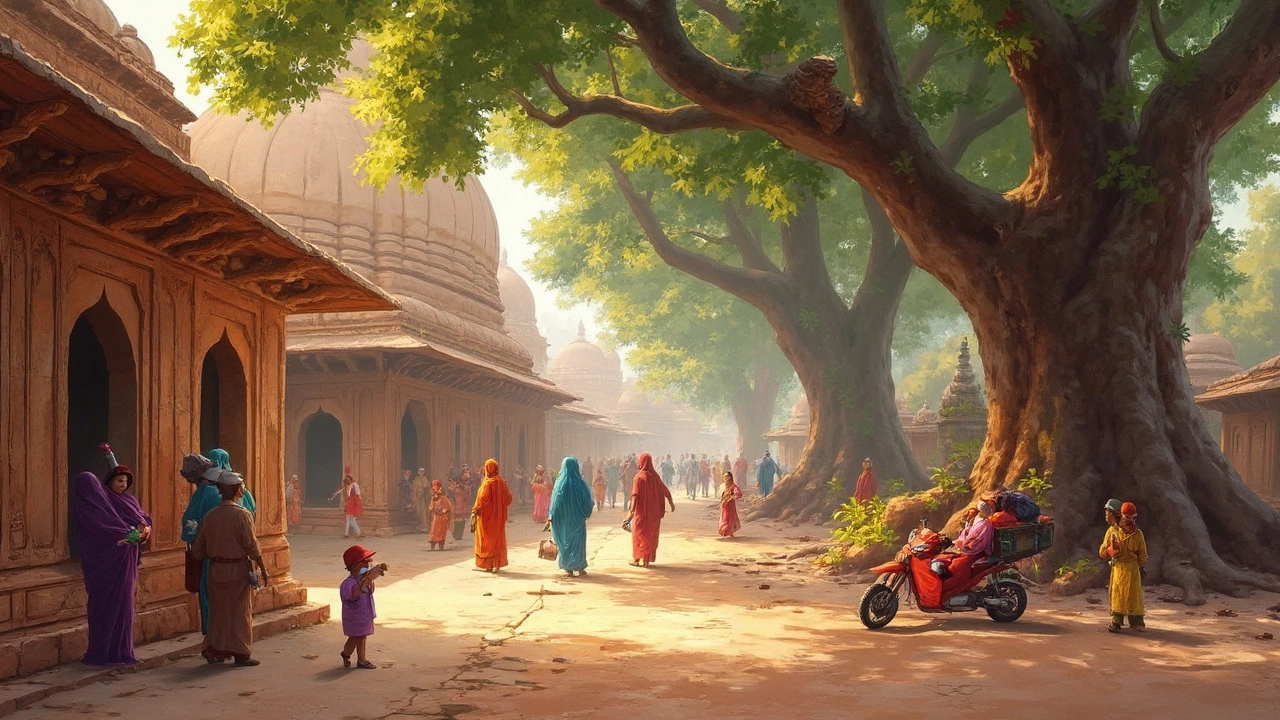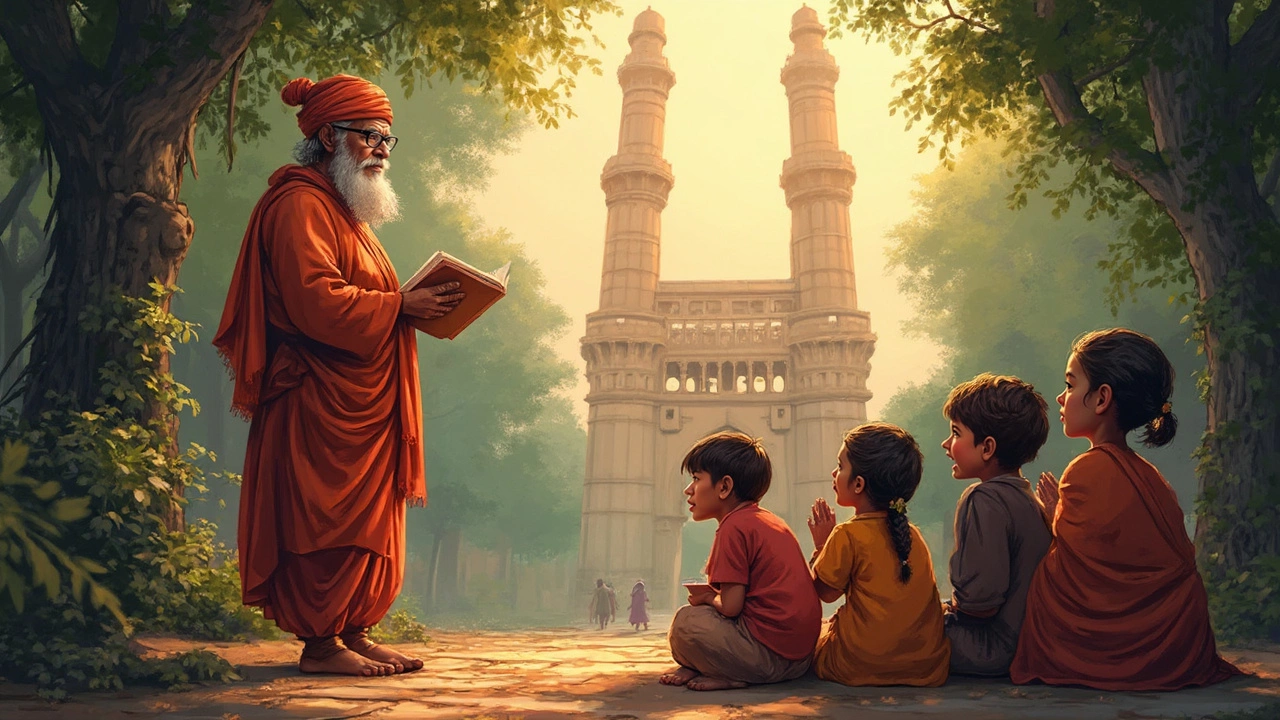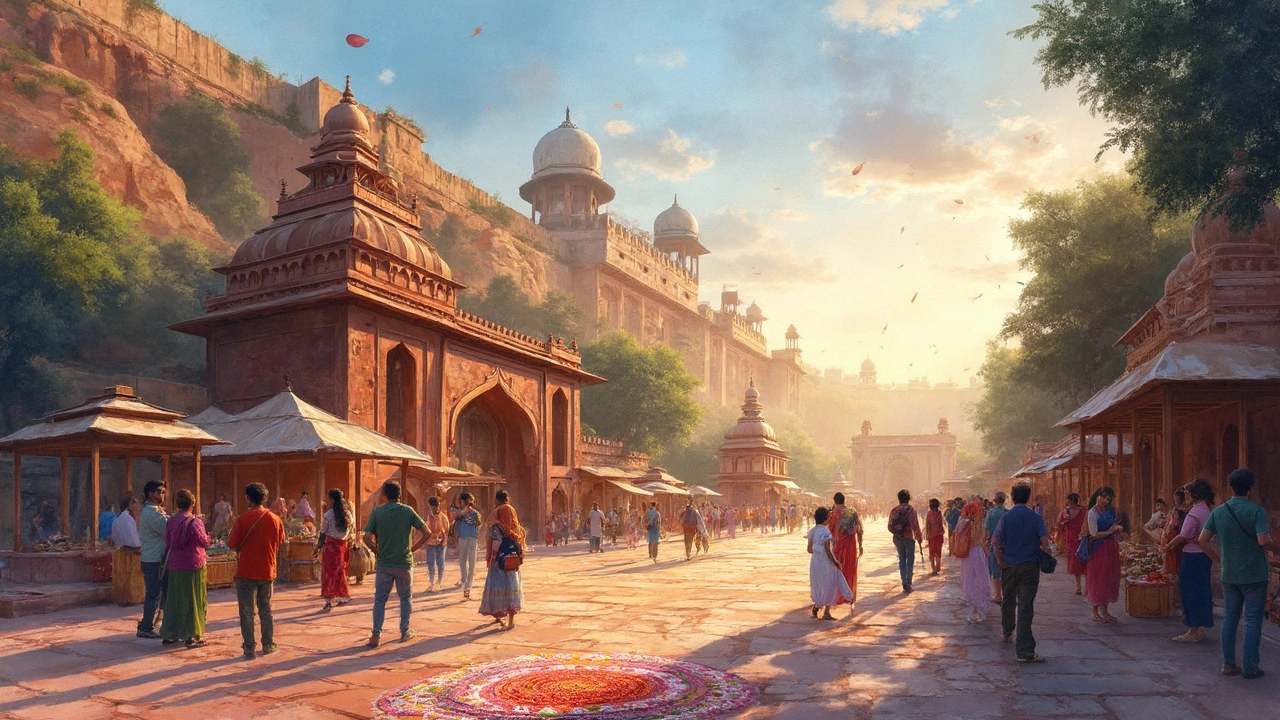Heritage Sites in India: Why They Matter More Than You Think
 Jun, 12 2025
Jun, 12 2025
If you think heritage sites are just old forts and temples with a lot of stairs, you're missing the big picture. In India, these places don’t just sit there looking pretty for tourist selfies. They hold the secrets of thousands of years—hidden in carvings, stone walls, and sometimes, even just in the way people still use them every day.
Ever wondered why people get so passionate about keeping a crumbling stepwell or weathered palace in shape? It’s about more than nostalgia. These sites show how India’s cultures blended, collided, and evolved long before you and I showed up. Walk around a place like the Qutub Minar or Hampi, and you can almost feel the stories under your feet—it’s real, not just textbook history. And here’s the thing: when these places disappear, huge chunks of identity and tradition go with them.
So before you scroll past another headline about some old site getting a UNESCO tag, stop and think what that actually means. In a country as varied as India, these heritage spots are like living museums. They connect you to people you’ll never meet and times you’ll never see, and they do it without a single boring lecture. Stick around—there’s way more to heritage sites in India than marble and myths.
- What Makes a Heritage Site?
- India’s Heritage Sites: More Than Just Tourist Spots
- How Heritage Sites Shape Culture and Identity
- Heritage Conservation: Why Bother?
- Tips for Visiting Heritage Sites in India
What Makes a Heritage Site?
So, what turns a regular spot into a true heritage site? Basically, it’s got to be seriously important—historically, culturally, or even naturally. In India, these sites can be ancient temples, forts, mosques, caves, or even whole cities that’ve stood the test of time. Think of the Taj Mahal, Red Fort, or the Ajanta and Ellora Caves. Each of these places did more than just survive for centuries—they meant something huge for the people who built or used them.
The main reason heritage sites matter is because they show real slices of the past. Things like the layout of a city, the writing on stone walls, or the remains of old water systems give us clues about daily life, trade, religion, and even disasters long ago. It’s not always about kings and battles; some of the smaller spots, like stepwells or roadside shrines, are just as telling of India’s everyday story.
Across the world, places get tagged as "heritage sites" by groups like UNESCO if they meet strict criteria. For example, does the site show a masterpiece of human genius, like the sculptures at Khajuraho? Was it part of a big event or shift in history, like the ruins at Hampi? Or does it have rare art, architecture, or traditions you can’t find anywhere else?
The Indian government has its own list too. The Archaeological Survey of India (ASI) is the big watchdog here, protecting more than 3,000 monuments and heritage buildings across the country. Out of these, as of mid-2025, there are 42 sites in India on the UNESCO World Heritage List. That’s a big deal—only stuff with global value gets this title.
In short, a heritage site stands out because it shows something unique, old, and important that you really can’t find just anywhere. If you want to understand India’s story, these places are the key—no fancy museum ticket required. By the way, if you’re aiming to boost your knowledge about heritage sites India, these are the best starting points.
India’s Heritage Sites: More Than Just Tourist Spots
People usually think of heritage sites India only when planning a vacation or a school trip, but that’s selling them way short. Sure, these places draw millions—all for photos and stories—but they’re also tied right into the everyday life of locals and even the economy. A UNESCO tag, for example, isn’t just a fancy label. It brings global attention and cash for maintaining and protecting these spots. As of June 2025, India boasts 42 UNESCO World Heritage Sites, which is the sixth-highest in the world.
Let’s talk numbers for a minute. According to the Ministry of Tourism, these sites pull in more than 10 million visitors every year. That’s not just tourists—many locals go there for festivals, prayers, or simply to hang out. Sites like the Taj Mahal can see more than 25,000 people in a single day during peak season. Here’s a quick breakdown of some of the busiest sites:
| Site Name | Location | Annual Visitors (approx.) |
|---|---|---|
| Taj Mahal | Agra | 7-8 million |
| Qutub Minar | Delhi | 3 million |
| Agra Fort | Agra | 2.5 million |
| Elephanta Caves | Mumbai | 1.2 million |
But here’s the cool part: these places aren’t frozen in time. Take Varanasi’s ghats or Hampi’s boulders—people use them for rituals, markets, or just chilling with friends. Farmers still use some of Rajasthan’s ancient stepwells. Kids play cricket next to 1,000-year-old temples. The heritage sites are woven into daily routines.
Another angle? Jobs. Heritage tourism is a big deal for the local economy—guides, artisans, shop owners, cleaners, and even street food sellers all earn their bread thanks to these historic sites. In major tourist cities, up to 40% of the working population depends directly or indirectly on tourism linked to heritage spots.
So, when you visit one of these places, you’re actually stepping into something bigger than just a “monument.” You’re part of a community and a whole system that keeps traditions—and livelihoods—alive. If you see a sign asking you not to touch or litter, it’s not just for the rules. It’s because these sites play a much bigger role than most people realize.

How Heritage Sites Shape Culture and Identity
Heritage sites in India do way more than just bring in tourists—they actually help shape who people are and how communities see themselves. When you walk through the narrow lanes of Old Delhi or stand in front of the ancient rock-cut caves at Ajanta, you’re experiencing things that have influenced local languages, food, customs, and even family stories for generations.
Take the Taj Mahal. Sure, it’s a major symbol of India worldwide, but for many, it’s also a reminder of lost love, Mughal craftsmanship, and the mix of Persian and Indian styles. Kids study these places in school, families visit them on special trips, and artists draw inspiration from their designs. This is how traditions keep moving forward instead of fading away.
Certain heritage sites also play a role in everyday life. The ghats in Varanasi or temples in Tamil Nadu aren’t just for show—they’re real places where rituals, festivals, and life events (like weddings and coming-of-age ceremonies) happen all the time. Even recipes passed down in a family kitchen might have roots in foods once cooked for royalty at these historic forts.
There’s real data on the impact too. According to a report by the Ministry of Tourism in 2023, heritage tourism made up about 40% of all tourist visits to India. That’s not just about sightseeing—it’s people actively looking to connect with culture, identity, and stories. Check out this quick comparison:
| Heritage Site | Main Influence | Visitors Annually (2023) |
|---|---|---|
| Qutub Minar | Blending of Hindu & Islamic architecture | 3.5 million |
| Ajanta & Ellora Caves | Buddhist & Jain traditions; ancient art | 2.2 million |
| Varanasi Ghats | Hindu rituals & daily life | 6 million |
| Taj Mahal | Mughal heritage & art | 7.5 million |
The real power of these heritage sites India locations is how they bring people together over shared stories and rituals. These spots remind everyone where they came from, and why some customs or beliefs still stick around. So next time you see a local festival at a temple or a mural on a fort wall, remember—it’s all part of something much bigger than just history class.
Heritage Conservation: Why Bother?
If you’ve ever seen before-and-after photos of ancient monuments covered in graffiti or falling apart, you know how fragile India’s historical spots really are. Here’s the thing—once they’re gone, they’re gone for good. Heritage conservation isn’t just about fixing old buildings. It’s about protecting pieces of history so future generations actually get to see them, not just read about them in textbooks.
Why does it matter? Well, for starters, heritage sites India drives serious tourism. According to the Ministry of Tourism, top heritage sites like the Taj Mahal pull in millions of visitors each year, bringing jobs and cash to local neighborhoods. Even less-famous places, like Rajasthan’s stepwells or the Ajanta Caves, draw crowds from all over. That flow of money helps whole communities—not just guides and hotel owners, but local craftspeople, artists, and small restaurants or markets nearby.
On top of that, these sites give people a sense of pride and connection. Think of how schools take kids on field trips to places like Red Fort or Elephanta Caves. Seeing ancient art, architecture, or even a centuries-old water system up close is way more memorable than a picture in a book.
Here’s a real problem, though—lots of places are under threat from pollution, heavy crowds, illegal construction, and plain old neglect. The Archaeological Survey of India (ASI) manages over 3,600 historical monuments, and it’s tough to keep track of them all. According to a 2023 government report, about 50 monuments have already basically vanished due to encroachment or damage—bet you didn’t know that.
| Heritage Site | Annual Visitors (approx.) | World Heritage Status |
|---|---|---|
| Taj Mahal | 7 million | Yes |
| Qutub Minar | 3.9 million | Yes |
| Ajanta Caves | 300,000 | Yes |
Want to help? Here are some simple ways to make a difference next time you visit:
- Follow the rules—don’t carve your name or litter inside the site.
- Use designated walkways to avoid damaging fragile areas.
- Support local guides and sellers rather than big chain stores.
- Report anything weird, like vandalism or people breaking rules, to the staff.
By caring even a little more, you’re helping keep India’s heritage alive for everyone, not just for now, but for way down the road.

Tips for Visiting Heritage Sites in India
Getting the most out of your trip to any heritage site in India takes a bit of planning and a lot of curiosity. You don’t need fancy gear or a detailed history degree, but a few smart moves will help you see way more than just the big, obvious stuff.
- heritage sites India have strict opening hours and most close before sunset—even everywhere-famous places like the Taj Mahal. Check official timings and holiday closures before heading out.
- Buy tickets online whenever possible. The Archaeological Survey of India (ASI) website lets you reserve spots for dozens of major sites, saving you time and letting you skip long lines.
- Many sites have guides approved by ASI—pick these instead of unofficial touts hanging around entrance gates. ASI guides usually know their facts, speak good English or Hindi, and won’t drag you to shops for a cut.
- Respect dress codes. At religious spots like temples in Khajuraho or Jama Masjid in Delhi, covered shoulders and legs are a must. Some ask you to remove shoes, so wearing easy slip-ons helps.
- Carry water, a hat, and sunscreen. You’ll be doing a lot of walking, especially at sprawling places like Hampi or Fatehpur Sikri, which cover several square kilometers.
- Don’t skip the small museums inside many sites; Humayun’s Tomb and Sanchi Stupa both have cool mini-exhibitions with real artifacts and storyboards in English.
- Photography rules vary; flash and tripods are usually banned indoors. Always look for the sign before snapping pics. At Ajanta and Ellora Caves, flash is a strict no—those paintings are 1500 years old.
- Help keep the site clean. Use the proper bins, and don’t scratch graffiti—India actually fines people for vandalizing monuments now, and there are plenty of cameras keeping an eye out.
If you’re curious how visitor numbers stack up, check out this quick table of some of the most popular heritage sites and average annual footfall:
| Site | State | Yearly Visitors (approx.) |
|---|---|---|
| Taj Mahal | Uttar Pradesh | 6.9 million |
| Qutub Minar | Delhi | 3.8 million |
| Red Fort | Delhi | 3.2 million |
| Humayun’s Tomb | Delhi | 1.6 million |
| Mahabalipuram | Tamil Nadu | 1.2 million |
Timing your visit makes a big difference. Go early morning or late afternoon for cooler weather and way fewer crowds. Last tip? Download the "Incredible India" app for the latest on ticketing, safety advisories, and travel hacks. Trust me, it saves loads of trouble on the ground.